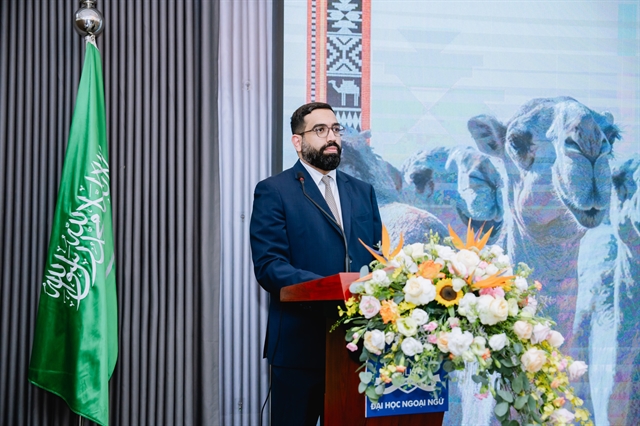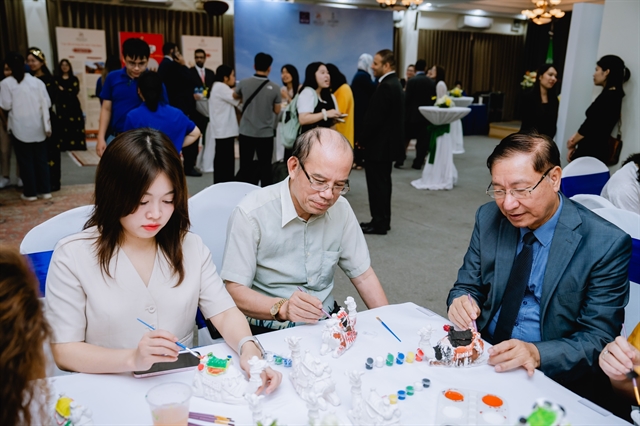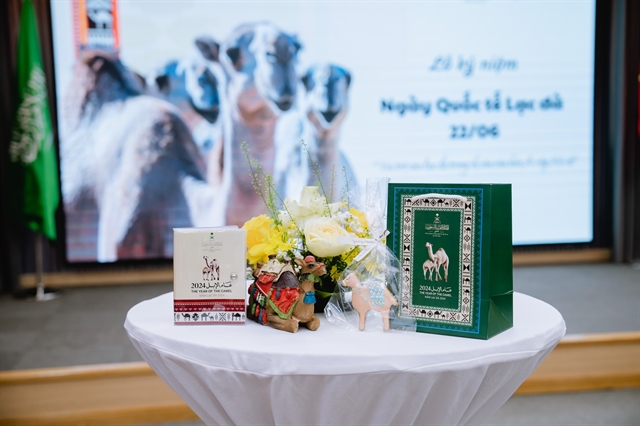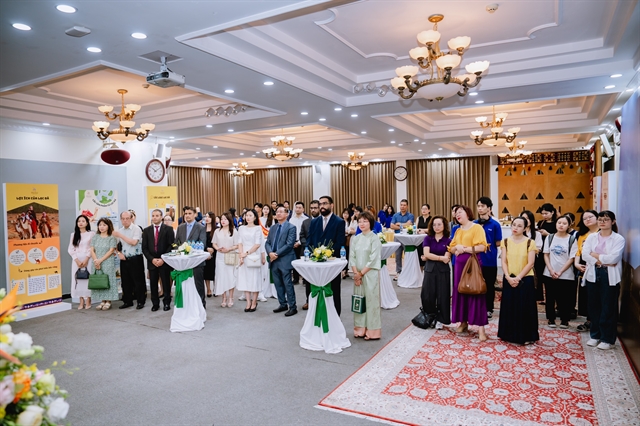The event, to mark World Camel Day and celebrate the International Year of Camelids (IYC 2024) was jointly organised by the Embassy of Saudi Arabia and the University of Languages and International Studies within Việt Nam National University, Hà Nội.
HÀ NỘI – In the first event of its kind, Việt Nam has been marking World Camel Day (June 22) and celebrating the International Year of Camelids (IYC 2024).
It was jointly organised in Hà Nội by the Embassy of Saudi Arabia and the University of Languages and International Studies at Việt Nam National University.

Students attend the event. Photos Courtesy of the embassy
The special day honoured the historical, cultural and economic value of camels, as well as helping Vietnamese people to have a better understanding about the role, value and significance of the animal in Arab life, as well as efforts by Saudi Arabia to preserve and promote the animal's heritage.

Hamoud Naif S. Almutairi from the Embassy of Saudi Arabia at the event.
Hamoud Naif S. Almutairi, Charge d’ Affaires a.i of the Embassy of Saudi Arabia highlighted the profound impact of camels in Arabic culture, saying that the so-called 'desert ships' were the reason Arabs were able to settle in the desert.
Camels are referenced in the Quran and hold an extremely important place in the hearts and minds of the Arab people, as well as sustaining their lives in often harsh environments.
In 2000, under the patronage of Saudi Arabia's Prince Mishaal bin Abdulaziz Al Saud, the idea of organising a Camel Festival, with an award named after King Abdulaziz, was proposed.

People enjoy artful activities at the event.
The festival is held every year in the Umm Ruqaybah area near Al Artawiyah area, Saudi Arabia, with many special events and the participation of a large number of traders, all honouring the camel.
It promotes the heritage values associated with the image of the camel in Saudi Arabian, Arab and Muslim cultures and the importance of heralding in a new economic system, integrated economy for the auction and camel-related industries, increasing benefits for society and those interested in this rich heritage.

The event aims to celebrate the World Camel Day (June 22).
Vice Rector of the University of Languages and International Studies Ha Le Kim Anh said this event is an opportunity for lecturers, students and lovers of Arabic culture to learn more about the camel symbol of the Arab world and the role of the animal in the life of the Arab people.
Visitors to the event were introduced to Arabic culture through traditional products such as dates, coffee, and camel art.
Dromedary camels lived in parts of the Arabian Peninsula and later spread to the deserts of North Africa and the Middle East. They were brought to the coast of the Arabian Peninsula, and from there to Egypt and across the Red Sea to Sudan in a migration thought to have taken place between 2,500-1,550 BC.
Camels also live in some areas of the Near East and Central West Asia.
Arab camels have long legs, are light weight and are relatively hairless; when they encounter harsh arid weather, it is the fat in their hump which provides nutrients to keep them alive.
Camels, of their many varieties, have played a pivotal role in the development of human society, especially since their domestication about 3,000 to 4,000 years ago.
Camels are not only used as a means of transportation but also as an important source of food and raw materials.

Participants at the event.
In addition, camel products are one of the main export items to ensure food security.
People in the Arabian Peninsula drink camel milk, eat the meat, and use the animal's skin, so they depend on their camels for more than just a way of allowing them to move around and live in harsh natural environments. VNS